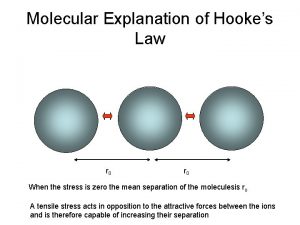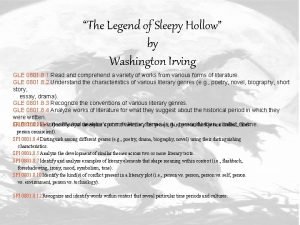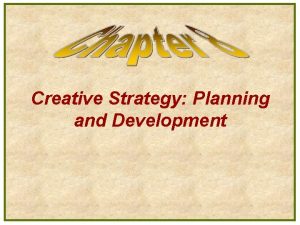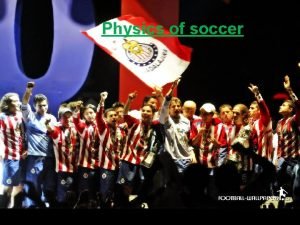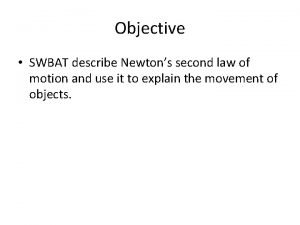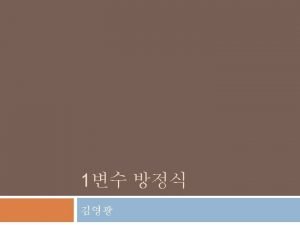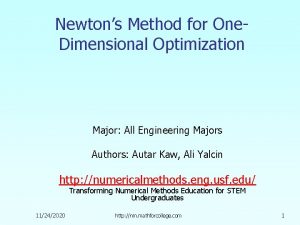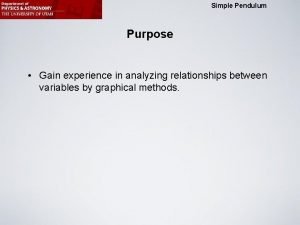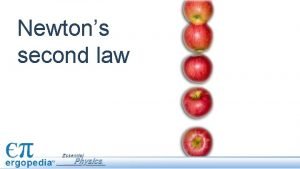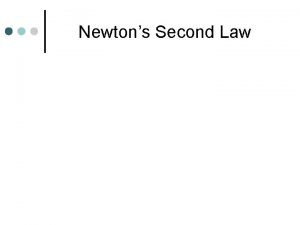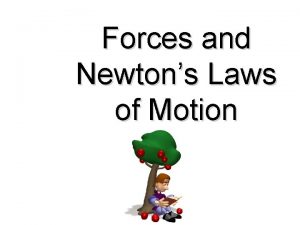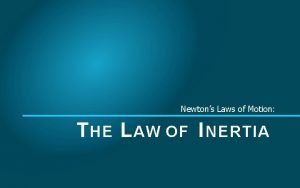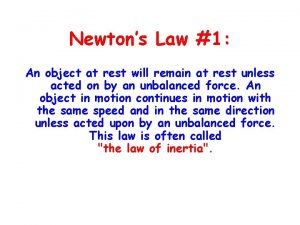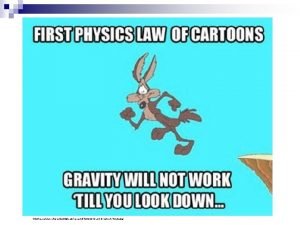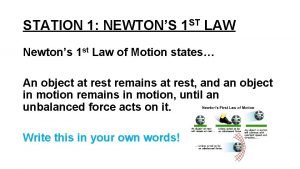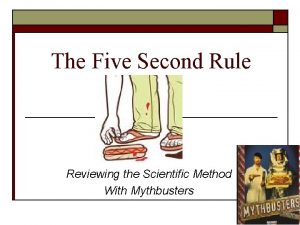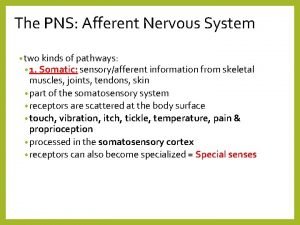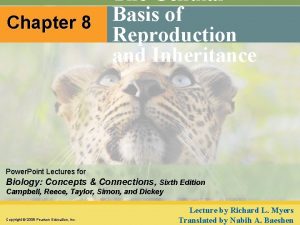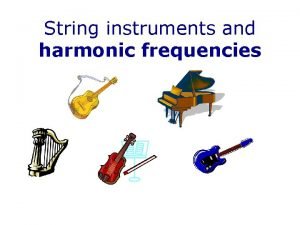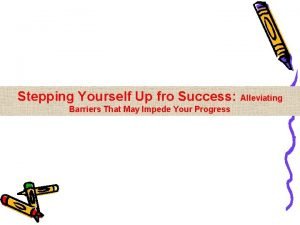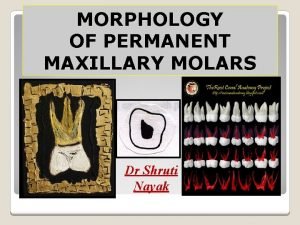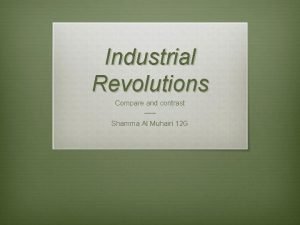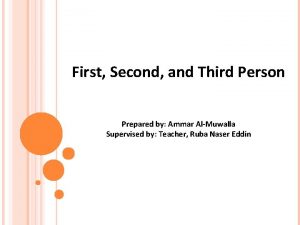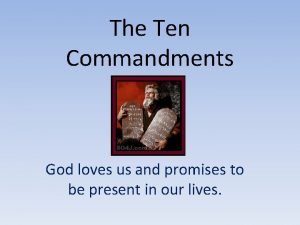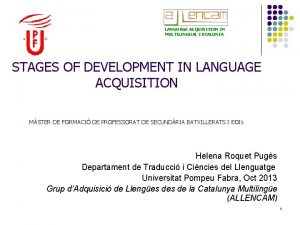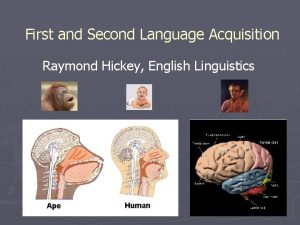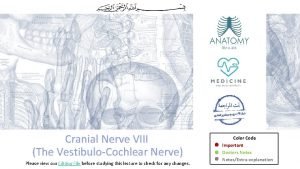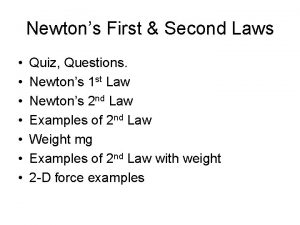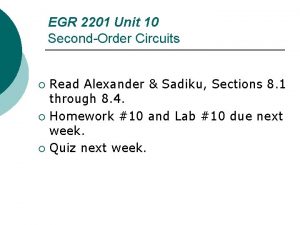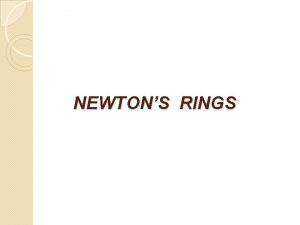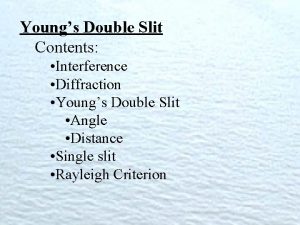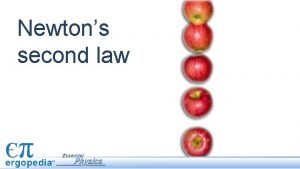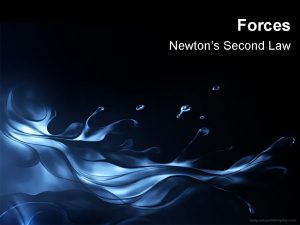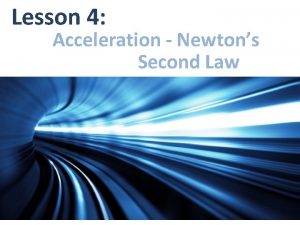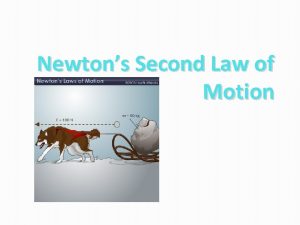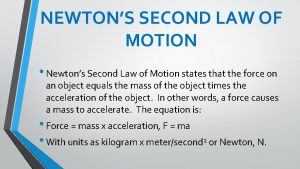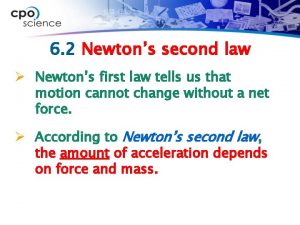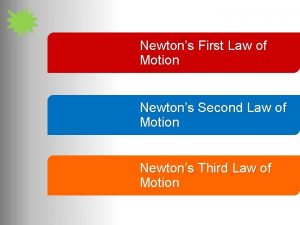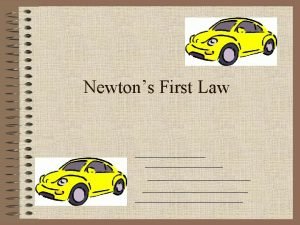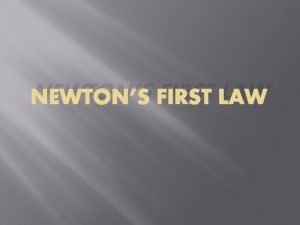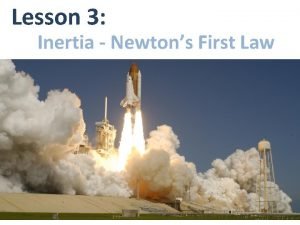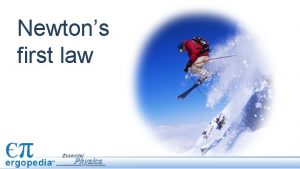FIRST EXPERIMENT YOUNGS EXPERIMENT Second EXPERIMENT Newtons rings
















































- Slides: 48

FIRST EXPERIMENT

YOUNG’S EXPERIMENT







Second EXPERIMENT

Newton’s rings Experiment







THIRD EXPERIMENT

Photometric Law of Distance

PHOTOMETRIC Principal and task: The luminous intensity emitted by a punctual source is deter mined as a function of distance. PROBLEMS: 1. The luminous intensity emitted by a punctual source is determined as a function of distance from the source. 2. The photometric law of distance is verified by plotting illuminance as a function of the reciprocal value of the square of the distance.

PHOTOMETRIC The aim of photometry experiment ▸ The luminous intensity I emitted by a punctual source is determined as a function of distance from the source. ▸ The photometric law of distance is verified by plotting illuminance as a function of the reciprocal value of the square of the distance.

PHOTOMETRIC Equipment: ▸ Luxmeter probe ▸ Optical profile bench ▸ Filament lamp 6 V/5 A ▸ Universal clamp ▸ Power supply

PHOTOMETRIC Experimental set-up ▸ Switch on the luxmeter and measure the background illuminance E 0. ▸ Set the separation r between the probe and lamp to 55 cm. ▸ Switch on the lamp and measure the illuminance E. ▸ Decreasing the separation in steps of 5 cm, record E until you reach a separation of r = 25 cm.


FORTH EXPERIMENT

Lloyd’s Mirror

Objective Understand the nature of sound-waves and calculate the frequency of ultrasonic sound−waves by Lloyd’s Mirror Interference.


Schematic representation of the interference setup


D (cm) V (V) D (cm) 4 0. 072 4. 1 Data V (V) D (cm) V (V) 5. 4 0. 061 6. 8 0. 059 0. 073 5. 5 0. 064 6. 9 0. 060 4. 2 0. 072 5. 6 0. 066 7 0. 061 4. 3 0. 070 5. 7 0. 068 7. 1 0. 061 4. 4 0. 067 5. 8 0. 069 7. 2 0. 062 4. 5 0. 066 5. 9 0. 067 7. 3 0. 063 4. 6 0. 065 6 0. 066 7. 4 0. 063 4. 7 0. 064 6. 1 0. 065 7. 5 0. 064 4. 8 0. 063 6. 2 0. 064 7. 6 0. 065 4. 9 0. 063 6. 3 0. 063 7. 7 0. 066 5 0. 062 6. 4 0. 062 7. 8 0. 065 5. 1 0. 061 6. 5 0. 061 7. 9 0. 065 5. 2 0. 060 6. 6 0. 060 8 0. 064 5. 3 0. 060 6. 7 0. 059 8. 1 0. 063


FIFTH EXPERIMENT

Meld's Experiment

Objective 1 - Generating standing, circularly polarized thread waves for various tension forces F.


Objective 2 - Determining the phase velocity c of thread waves. m*=m/L

Data m=0. 5 g L=53 cm S= 48 cm

Evaluation n 2 3 4 5 6 F( ) CF ( ) f( ) C( )

Plot

SIXTH EXPERIMENT

YOUNG’S EXPERIMENT







THANK YOU FOR WACTHING
 Youngs modulus units
Youngs modulus units Eleanor van tassel brush
Eleanor van tassel brush Young’s creative process
Young’s creative process Newton's laws in soccer
Newton's laws in soccer Describe newtons second law
Describe newtons second law Newtons second kaw
Newtons second kaw Newtons second kaw
Newtons second kaw Newtons second laq
Newtons second laq Section 2 newtons laws of motion
Section 2 newtons laws of motion Newton's 2nd law
Newton's 2nd law Newton's 2nd law of motion example
Newton's 2nd law of motion example Newtons second law
Newtons second law Newtons second lwa
Newtons second lwa Newtons second aw
Newtons second aw Newtons second law example
Newtons second law example Newton's law of inertia example
Newton's law of inertia example Newtons first law of motion meme
Newtons first law of motion meme Newton 1st law of motion
Newton 1st law of motion Facts about newtons laws
Facts about newtons laws What is motion
What is motion 186 282 miles per second into meters per second
186 282 miles per second into meters per second Mythbusters 5 second rule
Mythbusters 5 second rule Essay first second third
Essay first second third Neuron order
Neuron order First generation antipsychotics vs second
First generation antipsychotics vs second First base second base third base meaning
First base second base third base meaning Wave
Wave Is we third person writing
Is we third person writing Y-5 cusp pattern
Y-5 cusp pattern Newton's first law and second law and third law
Newton's first law and second law and third law Newton's first law and second law and third law
Newton's first law and second law and third law Upper 6 morphology
Upper 6 morphology Ice cream jump rope song
Ice cream jump rope song Shamma al muhairi
Shamma al muhairi 2nd person definition
2nd person definition First and second order change
First and second order change Corona radiata
Corona radiata Glisside
Glisside God's promises
God's promises One two three four five six to hundred
One two three four five six to hundred First and second cranial nerves
First and second cranial nerves Difference of first language and second language
Difference of first language and second language Difference of first language and second language
Difference of first language and second language Vestibulocochlear nerve pathway
Vestibulocochlear nerve pathway Newtons law quiz
Newtons law quiz First and second order circuits
First and second order circuits Psychomotor considerations language acquisition
Psychomotor considerations language acquisition Nursing intervention examples
Nursing intervention examples What is the rule of second normal form
What is the rule of second normal form
